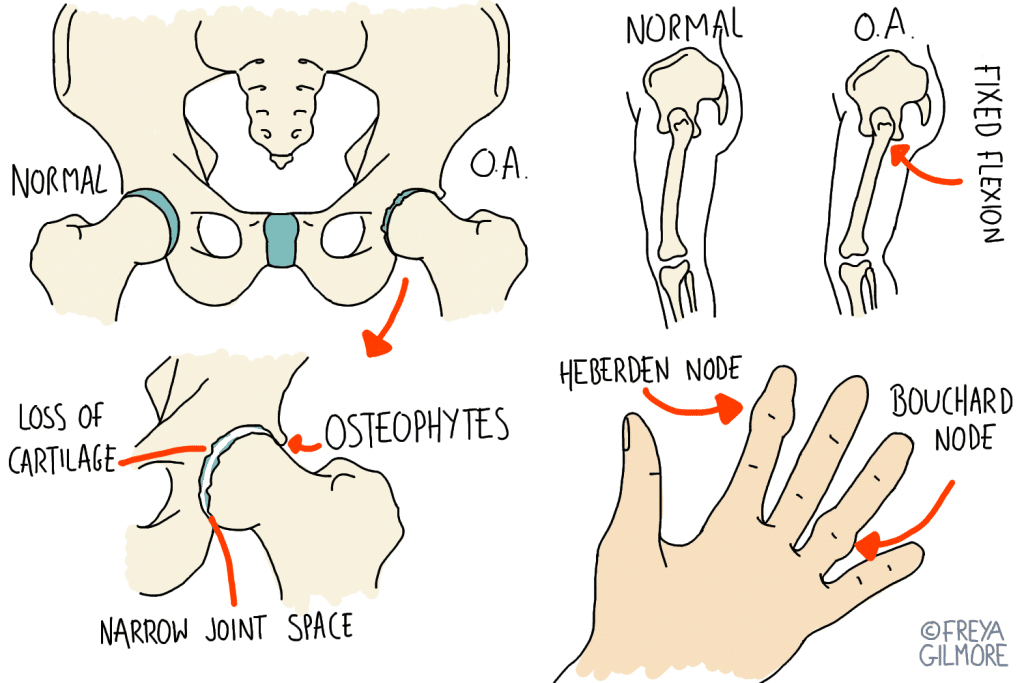

Osteoarthritis and associated arthritic pain can affect any joint in the body where there is a cartilage covered bone. Commonly it affects joints of the hands or feet, spine, shoulders, hips, and knees.

Some of the pain actually comes from the body’s attempts to protect itself from discomfort. When arthritis affects part of a joint surface, it becomes uncomfortable to move through that range. Rather than purely stopping a movement at that painful range, the body tries to find a way around it. This might mean changes to posture or the way you walk, which in turn asks more of other muscles and joints.
So alongside the arthritic pain itself, you feel the strain of muscles and otherwise healthy joints having to behave differently. If the muscles that act on the joint itself get tight to try and protect the joint, they can actually cause it to become more stiff. In later stage arthritis, the space within the joint reduces. Muscles around it holding it even tighter doesn’t help the cartilage to recover.
In more advanced arthritis, pieces of cartilage can break off within the joint and “catch” on movement. The catching is usually quite unpredictable as the cartilage floats loose within the joint, so it’s hard to anticipate and prevent the pain. This in turn can lead to more compensation as the body tries to prevent any painful movement.
To ease the symptoms of arthritis, you need to manage both the effects of the changes within the joints, and the body’s reaction to them.
Cartilage is happiest when it’s being compressed and decompressed fully. This allows waste products to be squeezed out to make room for nutrients to enter it. However, when a joint has a painful range, the body will avoid moving through that full range and pumping the cartilage as it should. It can take some work to encourage the body to move normally again.
During treatments with your osteopath, we can use gentle movements to convince the body that it is safe to move how it used to. This starts the process of compressing and decompressing the cartilage again, meaning the environment around the cartilage is already more healthy after the first treatment. Over time, and with exercise, the cartilage is given the best chance it can have to heal, or at least slow the progress of arthritis.
Your osteopath will also work to ease off the over-protective muscles that might be holding the joint stiff. If other areas are adapting as mentioned above, this can also be addressed.
Arthritis is not something you just have to live with until you can get a joint replacement! Book now to start getting your movement back.